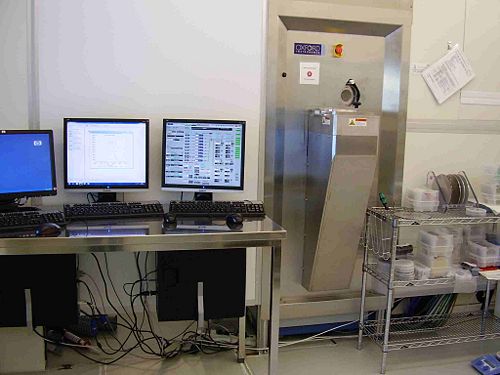Specific Process Knowledge/Etch/IBE⁄IBSD Ionfab 300: Difference between revisions
Appearance
No edit summary |
|||
| Line 23: | Line 23: | ||
*Etch in Stainless steel with X as masking material | *Etch in Stainless steel with X as masking material | ||
*Process develop | *Process develop | ||
**[[/Etch slow|Etch slow: resist can be removed with | **[[/Etch slow|Etch slow: resist can be removed with acetone after etch]] | ||
**[[/IBE Si etch|Si etching using AZ-resist at masking material]] | **[[/IBE Si etch|Si etching using AZ-resist at masking material]] | ||
Revision as of 13:18, 28 August 2013
Feedback to this page: click here
IBE/IBSD Ionfab 300: milling, dry etching and deposition in the same tool

IBE: Ion Beam Etch
IBSD: Ion Beam Sputter Deposition
This Ionfab300 from Oxford Instruments is capable of of both ion sputter etching/milling and sputter deposition. The etching/milling with Argon alone is done by pure physical sputtering of the surface. This causes redeposition on the sidewalls leaving side wall angles at typically between 70-90 degrees (often closest to 70 degrees).
Process information
Etch
- Some general process trends
- Results from the acceptance test:
- Au etch with zep520A as masking material
- Ti etch with zep 520A as masking material
- Au etch with Ti as masking material
- Magnetic stack containing Ta/MnIr/NiFe
- Etch in Stainless steel with X as masking material
- Process develop
Deposition
- Results from the acceptance test:
| Purpose |
|
. |
|---|---|---|
| Performance | Etch rates |
Typical 1-100 nm/min depending om material and process parameters |
| Anisotropy |
| |
| Uniformity |
| |
| Process parameters | Gas flows |
Etch source:
Deposition source:
|
| Substrates | Batch size |
|
| Materials allowed |
| |
| Possible masking material |
|
